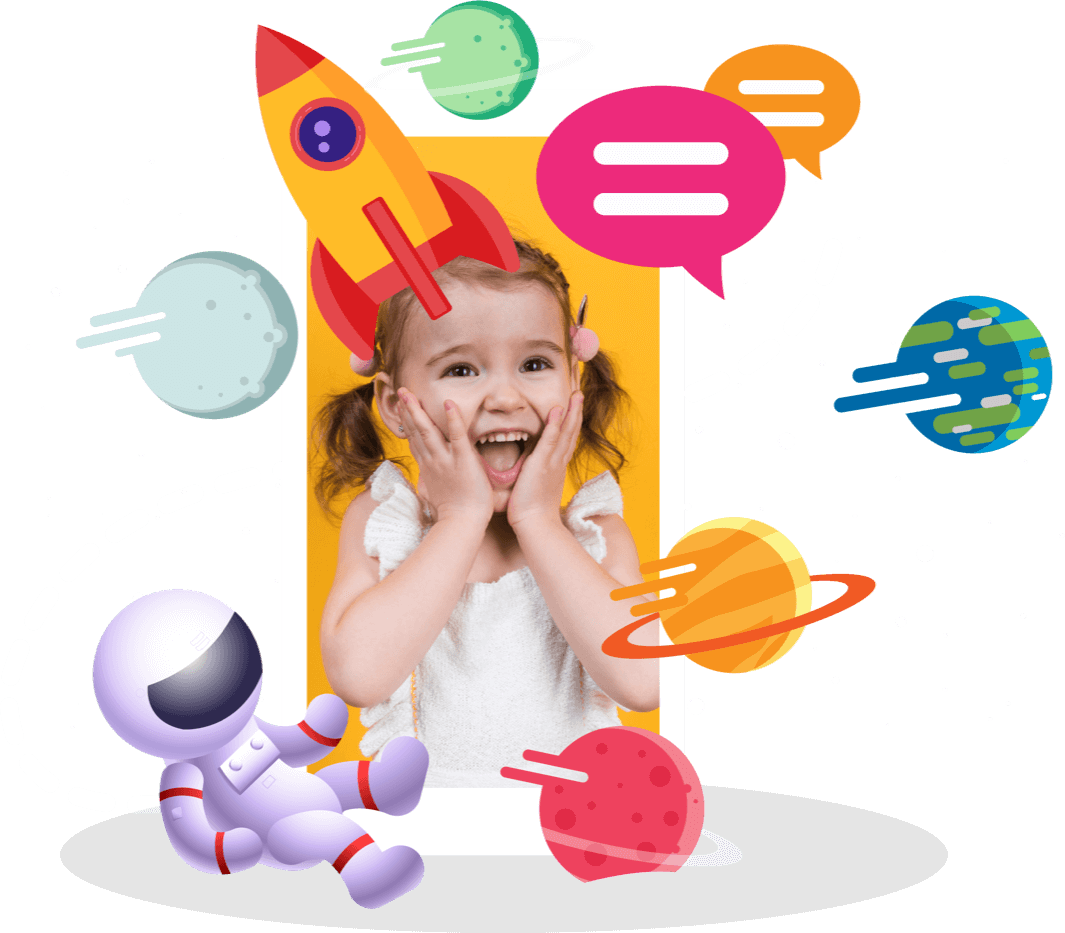Attention deficit hyperactivity disorder (ADHD) and autism spectrum disorder are the most common neurodevelopmental disorders. Some of the symptoms of ADHD and autism can be similar, such as having trouble with attention to people, not being able to read and appropriately respond to social cues, or even meltdowns are common for both disorders. These two neurodevelopmental disorders can also occur together.
This overlap in symptoms can sometimes make parents and caregivers confused as to what their child has. In this article, we will discuss the similarities and the differences between ADHD and autism.
The Difference Between ADHD and Autism
The Centers for Disease Control defines ADHD as one of the most common neurodevelopmental disorders during childhood. ADHD is usually first diagnosed in childhood. The disorder can also last into the person’s adulthood.
The symptom that is most commonly associated with ADHD is trouble with paying attention. People with ADHD may act without thinking about the results and consequences, meaning they have trouble controlling impulsive behaviors. Another characteristic of ADHD in individuals is that they can be overly active, hence the term ”hyperactivity” in the name.
It is alright for children to have trouble in terms of focus and behavior throughout their childhood in one way or another. But children can outgrow these traits when they grow up and learn to cope or focus better. However, children with ADHD don’t simply get rid of these behaviors as they grow up.
There are some characteristics that can be observed in a child with ADHD. A child with ADHD might be inclined to daydream a lot or talk too much. They may act without thinking about the consequences, take unnecessary risks, or make careless mistakes.
Another trait that children with ADHD might have is finding it troubling to take turns in mutual communication. They may want to fidget or squirm often, and they often lose things. Since ADHD majorly affects the child’s social abilities, they may have trouble getting along with other people.
Because of their lack of impulse control , children with ADHD might have tantrums and meltdowns because they become frustrated. Another reason that they have trouble getting along with other people is because they usually interrupt people during conversations or blurt inappropriate things out. Some sensory inputs like the sound or smell of things may be overwhelming, causing them to overreact.
As mentioned before, difficulty following certain social rules and conduct make it difficult for children and individuals with ADHD to make or keep friends. Negative feedback constantly given to these individuals negatively impacts their self-esteem and motivation towards life.

Types of ADHD
Depending on which types of symptoms are most prominent in the child, there are three major types of ADHD as the following:
-
Predominantly Inattentive and Distractible Type of ADHD : In this type of ADHD, it is difficult for the individual to pay attention to details. They are easily distracted. They might not be able to finish a particular task. It could be difficult for them to follow the flow of conversations. It is predominantly characterized by inattention and distractibility without hyperactivity.
-
Predominantly Impulsive/Hyperactive Type of ADHD: Predominantly impulsive-hyperactive presentation of ADHD is the least common one. In this type of ADHD, the individual fidgets a lot. It may be difficult for them to sit or stand still for long, like during classes. Impulsivity causes them to interrupt others while speaking, and they might not be able to wait for their turn. Individuals with this type of ADHD, especially impulsiveness, might be more prone to have more injuries and accidents than others.
-
Combined Type of ADHD: As the name suggests, this type of ADHD is a combination of the two previously mentioned types. It is the most common type of ADHD, and the symptoms of the inattentive and distractible type and the impulsive/hyperactive type characterize this type.
The symptoms of ADHD can change over time. This means that the presentation of the disorder can also change over time.
Similar to ADHD, autism spectrum disorder (ASD) is a developmental disability. This disorder can cause significant challenges in social, communication, and behavioral aspects of an individual’s life.
As the name suggests, autism is a spectrum disorder where each individual with the condition has different symptoms. Often, there is no common physical c haracteristic regarding how people with ASD look. Autism affects the way a person communicates, behaves, or learns.
People with autism spectrum disorder have different levels of abilities. Some may be exceptionally gifted, while others are severely challenged, to the extent that they need constant support in their daily lives.
With the publishing of the 2013 DSM, the diagnosis of autism spectrum disorder started to include several conditions that were previously diagnosed separately. ASD is now an umbrella diagnosis for autistic disorder, pervasive developmental disorder - not otherwise specified (PDD-NOS), as well as Asperger’s syndrome.
Come along with 200k+ families!
Explore the endless possibilities of learning!
Download for Free.
There are specific characteristics that are sought out to make an ASD diagnosis. These are social and communication problems as well as restrictive and repetitive behaviors. Most individuals with autism struggle to make or maintain a conversation, or make eye contact. Many people on the spectrum also have different ways of learning.
The symptoms and signs of autism spectrum disorder usually begin in early childhood, and it is a lifelong condition that affects a person’s life. Some of the symptoms or signs of autism spectrum disorders in children or adults include the following:
- not making eye contact
- not looking at a direction pointed by others
- trouble with others
- not being interested in other people
- not understanding other people’s feelings
- not preferring to be cuddled
- difficulty with adapting to changes in routine
- unusual reactions to certain stimuli, such as sounds and tastes
- difficulty expressing wants or needs
- having specific areas of interests
- repeating certain words or phrases in place of typical language
- losing skills that were once acquired, like losing words they were using before
The disorder can affect everyone from all racial, ethnic, and socioeconomic groups. It is determined to be four times more common among boys than among girls.
There is no single cause for autism. Research and studies suggest that genetic, biological, and environmental factors contribute to developing autism in children. Most scientists agree that genes are one of the risk factors, children who have a sibling with ASD are at a higher risk of having ASD, and children that are born to older parents are at greater risk of having ASD.
So what are the differences?
In many aspects, autism spectrum disorder and ADHD share many of the symptoms. However, they are two separate conditions. As its name suggests, autism is a spectrum disorder, and the signs and symptoms can range in their severity. But ADHD is not a spectrum disorder, though it may also produce a range of symptoms. The bottom line is each of these disorders can cause a range of difficulties from one child to another.
Autism spectrum disorders are developmental disorders that mainly affect language and communication skills, behavior, social interactions, as well as the way a person learns. On the other hand, ADHD affects the way a person’s brain develops. A child can have both conditions.
Sometimes attention deficit hyperactivity disorder or ADHD and autism spectrum disorders can be similar to each other to the point that it makes diagnosis difficult. Either of the conditions can cause problems in terms of focus or cause the person to be impulsive, or give them a hard time during communications and interactions. Both disorders can create problems in a child’s school life or relationships in general.
Children with autism have difficulty focusing on tasks that are not their areas of interest. They may also have restricted and repetitive behaviors, where, for instance, they obsess about certain toys or actions they do over and over again. Children with ADHD generally don’t like things they have to concentrate on for a long time. Unlike them, children with ASD can focus on things that are their areas of interest.

Another aspect where the two disorders differ is communication. Yes, both of these conditions can affect a child’s interaction with others. However, children with autism may struggle more in terms of social awareness. It is often difficult for them to express their thoughts and feelings, and they may find it difficult to make eye contact. However, talking constantly may not be a problem for a child with ADHD. It is more likely that they will cut off or interrupt a person who is speaking.
As we mentioned before, a child with autism spectrum disorder can have special areas of interest. They like order and routines, as well as the regularity and repetition of actions. This may not be the case for a child with ADHD. For instance, a child with ASD can take the same road to school every morning and eat the same type of food or play with the same toy that they are obsessed with, and they become upset if any of these routines are interrupted in any way. However, a child with ADHD may not like engaging in the same type of activities over and over again or for long periods.
The first step to determine whether your child has ADHD, ASD, or both is to talk to a specialist that is familiar with both of the conditions. For ADHD diagnosis, clinicians seek a specific pattern of behaviors over time. This could be being distracted, forgetful, having difficulty waiting for their turn, fidgeting, etc. At this stage, the specialist will also talk to the family to get feedback regarding the behavior or care of the child and try to eliminate other possible causes of the symptoms.
For autism diagnosis, the specialist will also start with a questionnaire, ask questions to the family or caregiver, and observe the behavior of the child. Autism spectrum disorder behaviors usually start when the child is very young. If the specialists decide that further testing is needed, other tools and questionnaires or checklists are utilized to make further sure of the diagnosis.
Come along with 200k+ families!
Let's communicate better!
Download for Free.
It is possible for families and caregivers to have a difficult time distinguishing between ADHD and ASD diagnosis because both conditions can happen at the same time. Sometimes not all children can get a clear diagnosis with either one. Some children have both conditions. CDC states that 14% of children with ADHD also have ASD.
Since the two conditions can overlap greatly, it has been a struggle of doctors and clinicians for a very long time to diagnose a child with both of the conditions. For many years, the American Psychiatric Association (APA) said that the two conditions could not be diagnosed in the same person. However, in 2013, the APA changed its stance , and in the fifth edition of the DSM (DSM-5), it is stated that the two conditions can co-occur in the same person.
According to studies that examined the co-occurrence of ADHD and ASD, 30 to 50 percent of people with ASD also have symptoms of ADHD. Though we don’t exactly know the cause of either of the conditions, researchers think that they may be related to genetics. However, more research needs to be done in order to understand the relation and connection between ADHD and ASD.
Once you get a correct diagnosis from experts, you can get proper treatment. If both conditions co-occur in your child, it may be challenging to find a specialist who understands the combination of symptoms. Because sometimes underlying conditions can complicate the treatment plans. However, managing the symptoms of one of the conditions can help the other.

Behavioral therapies are widely used to treat the behavioral aspect of both ASD and ADHD. They are recommended as the first treatment in the early years of the child. Once the child is over the age of 6, then behavioral therapy is recommended with medication.
Behavioral therapy is a common method used as a treatment for autism spectrum disorders as well. Medication can be used to treat specific symptoms. In some cases, for people with both of the conditions, a medication that is prescribed to treat certain symptoms of ADHD can also be helpful with some symptoms of ASD as well since some of the symptoms overlap.
There is no one-size-fits-all solution for both ASD and ADHD. The treatment plan and the options depend heavily on the child’s specific condition since the presentation of the condition changes from one person to the next. More than one treatment method can be used at the same time to address different issues.
More research is still needed to better understand and approach both ADHD and ASD. We are still looking into the connection between the two. With every development and new information revealed, we understand and know more about the causes, and new treatment options become available in relation to that.
Both ADHD and ASD are lifelong conditions. But they can be managed with a proper treatment plan that is specifically made for the individual. You know your child the best, so you will understand if something works for them or not. If you have any doubts that your child may have ADHD or ASD or even both, talk to your doctor in length and look into options. Discuss their symptoms and how they affect your child. In order to get the best and most effective treatment possible, these discussions are essential.






